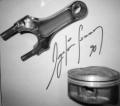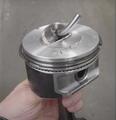In August 2021 I posted a thread reporting a starting problem which I thought I'd fixed by replacing the main relay. The symptoms were that the engine would turn over and fire, but would then die. http://www.nsxcb.co.uk/showthread.ph...ighlight=relay The relay I took out had been resoldered, and I figured that the resoldering had failed. Unfortunately I'm still having the same problem, even with the new relay, so it seems unlikely to be relay problems.
Typically it takes three or four attempts before the car will fire up and keep running, but after that it runs normally.
On one occasion after I'd got the engine running, the TCS amber warning light stayed on until I turned the engine off and restarted it. I get error code 35 when I short the SCS connector with a paper clip. Code 35 is TCS FI Data Line Failure, which doesn't mean much to me. The TCS warning light has not come on since.
What I notice now is that with the ignition switch in position 2, sometimes the warning lights on the dash are dim, but if I turn the key half way to position 3, they come on brightly. Also when they warning lights are dim, I don't hear the main really click and the Malfunction Indicator Lamp (MIL) doesn't go out.
So I'm thinking this is an ignition switch problem and the error code 35 is related to poor connections in the switch.
Any thoughts anybody abut the diagnosis, before I take the ignition switch out? I found a very old post from Amo with a step-by-step for taking it out and it's explained at 23-72 in the manual. Amo initially recommended taking the switch apart and cleaning the terminals rather than replacing it .... but subsequently had problems with his refurbished switch. So looks like a new switch required!
Peter
Found this on NSXprime as well https://www.nsxprime.com/wiki/Ignition_Switch





 Reply With Quote
Reply With Quote




